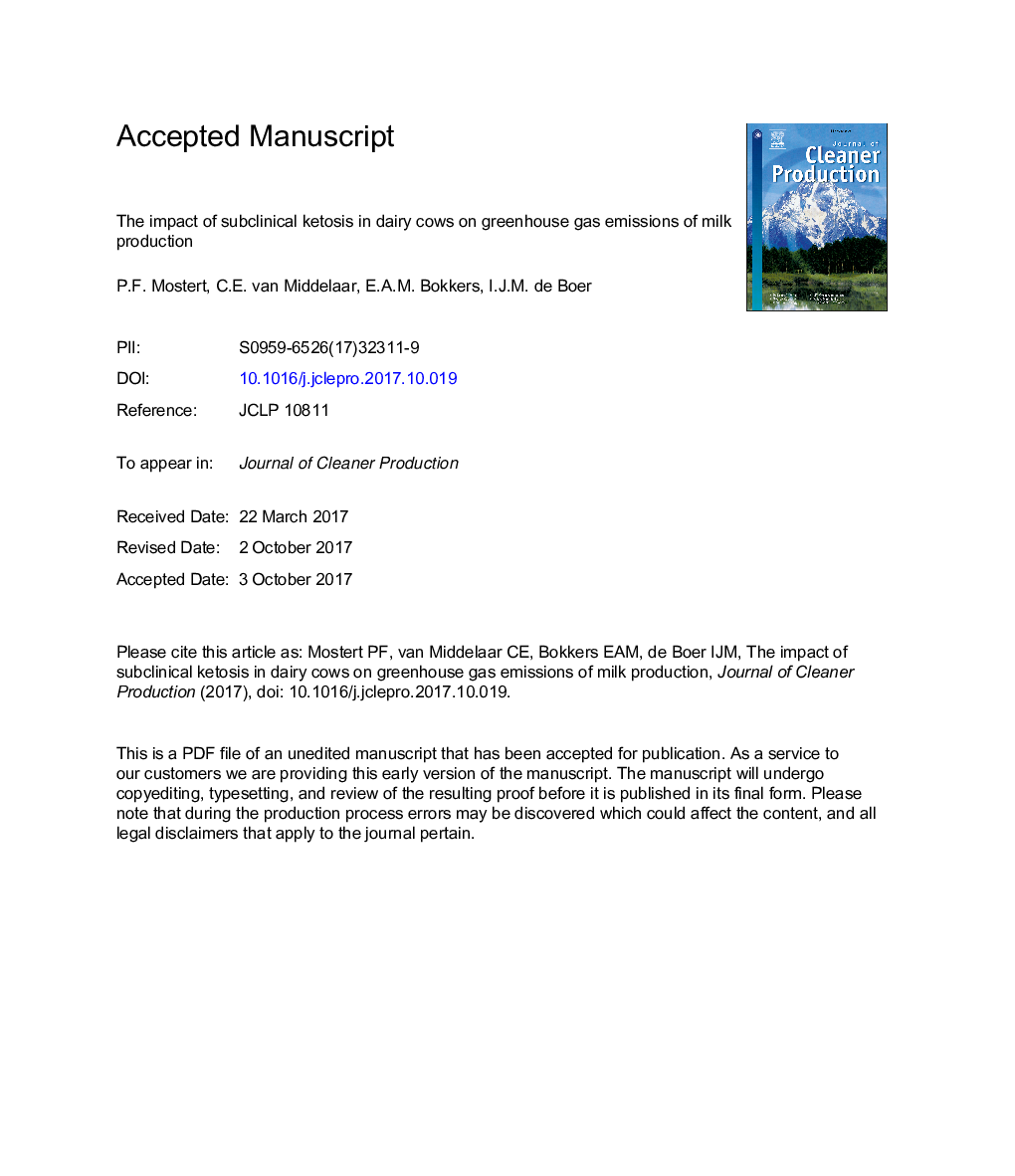| کد مقاله | کد نشریه | سال انتشار | مقاله انگلیسی | نسخه تمام متن |
|---|---|---|---|---|
| 8100256 | 1522082 | 2018 | 34 صفحه PDF | دانلود رایگان |
عنوان انگلیسی مقاله ISI
The impact of subclinical ketosis in dairy cows on greenhouse gas emissions of milk production
دانلود مقاله + سفارش ترجمه
دانلود مقاله ISI انگلیسی
رایگان برای ایرانیان
کلمات کلیدی
موضوعات مرتبط
مهندسی و علوم پایه
مهندسی انرژی
انرژی های تجدید پذیر، توسعه پایدار و محیط زیست
پیش نمایش صفحه اول مقاله

چکیده انگلیسی
The dairy sector is an important contributor to greenhouse gas (GHG) emissions. Subclinical ketosis (SCK), a metabolic disorder in dairy cows, increases the risk of other diseases. SCK can increase GHG emissions per kg of milk produced by reducing production efficiency of dairy herds. With an expected increase in milk consumption, and potential new policies to reduce GHG emissions from agriculture, producing efficiently and reducing GHG emissions becomes increasingly important. The objective of this study was to estimate the impact of SCK and related diseases (i.e. mastitis, metritis, displaced abomasum, lameness, and clinical ketosis) on GHG emissions of milk production. To this end, a dynamic stochastic simulation model was developed and combined with life cycle assessment (LCA). This model simulates the dynamics of SCK and related diseases, and the associated production losses (reduced milk production, discarded milk, a prolonged calving interval, and removal (culling or dying on the farm) per cow during one lactation. Subsequently, an LCA was performed to quantify the impact of SCK and related diseases on GHG emissions per ton fat-and-protein-corrected milk (kg CO2equivalents/t FPCM) from cradle to farm gate. The emissions of GHGs increased on average by 20.9Â kg CO2e/t FPCM per case of SCK, with a range between 6.8 and 48.0 (5-95 percentiles). This increase in emissions was caused by a prolonged calving interval (31%), discarded milk (30%), reduced milk production (19%), and removal of cows (20%). Most cows had SCK only (61%); for these cows emissions increased by 7.9Â kg CO2e/t FPCM, whereas emissions of cows that died on farm increased by 463.0Â kg CO2e/t FPCM. Sensitivity analysis showed that the disease incidence, removal risk, relations of SCK with other diseases, and emission factors related to feed production, enteric fermentation, and manure resulted in a high variation of GHG emissions. This study is the first study that estimated the impact of SCK on GHG emissions and showed the relation between cow health and GHG emissions of milk production.
ناشر
Database: Elsevier - ScienceDirect (ساینس دایرکت)
Journal: Journal of Cleaner Production - Volume 171, 10 January 2018, Pages 773-782
Journal: Journal of Cleaner Production - Volume 171, 10 January 2018, Pages 773-782
نویسندگان
P.F. Mostert, C.E. van Middelaar, E.A.M. Bokkers, I.J.M. de Boer,